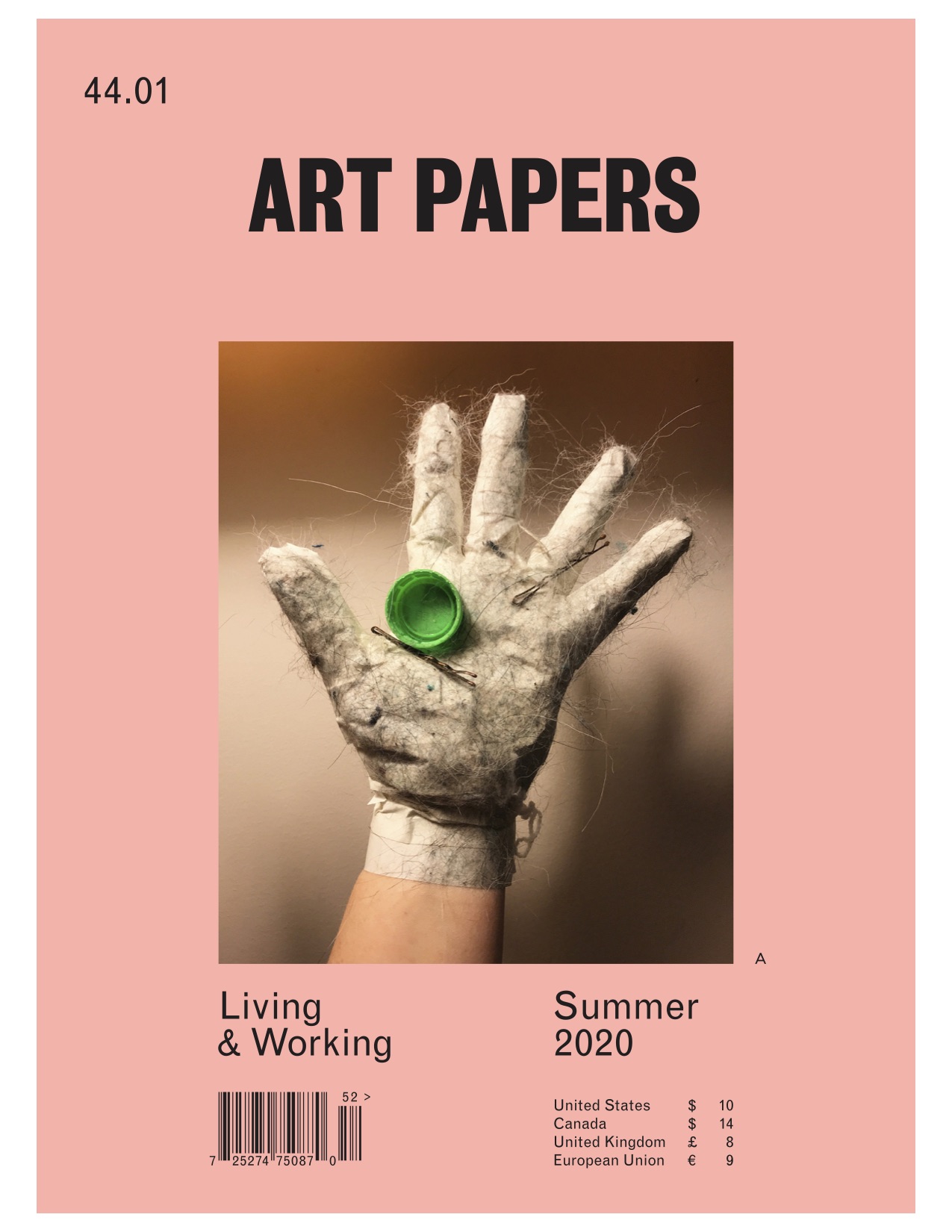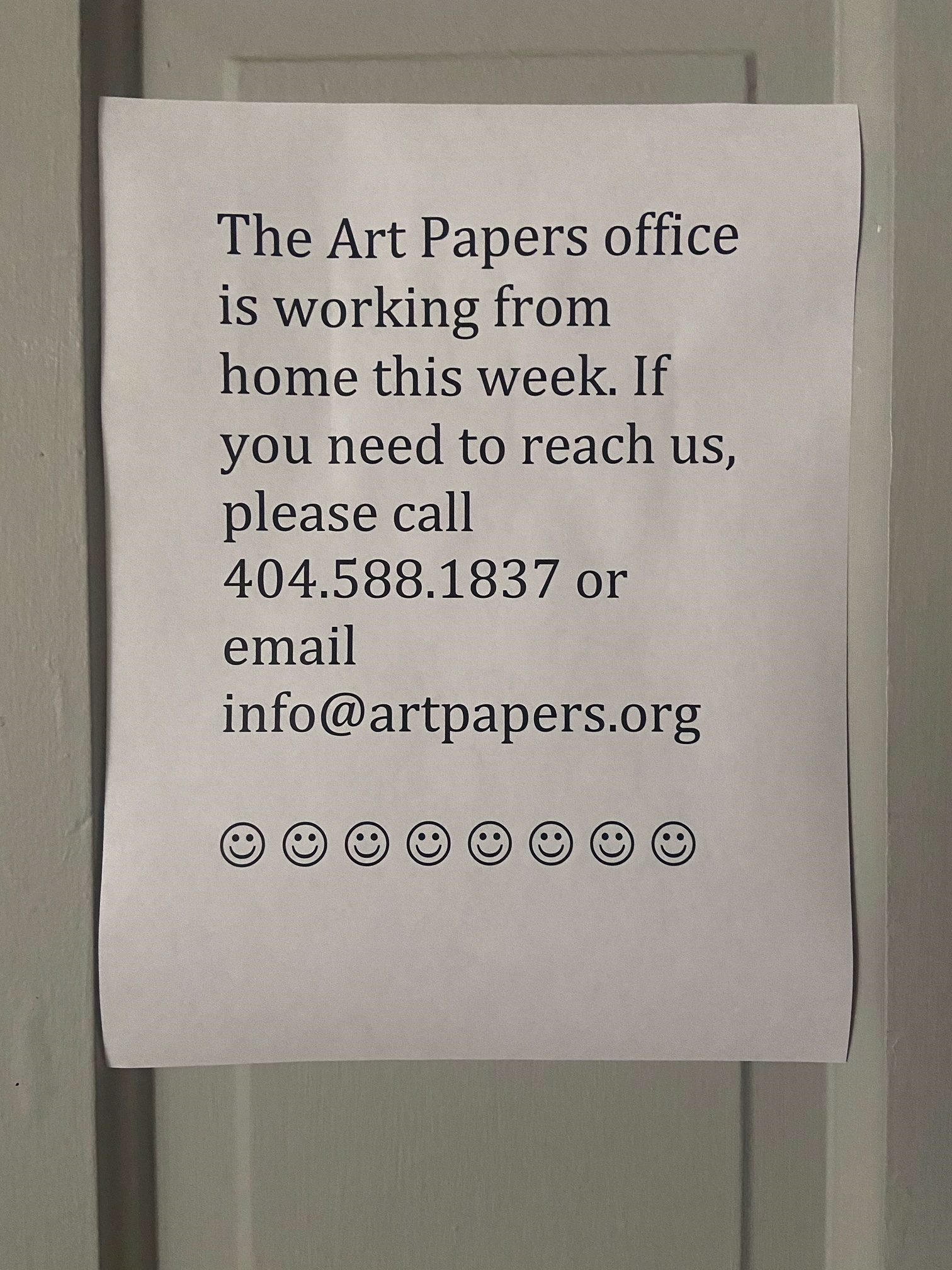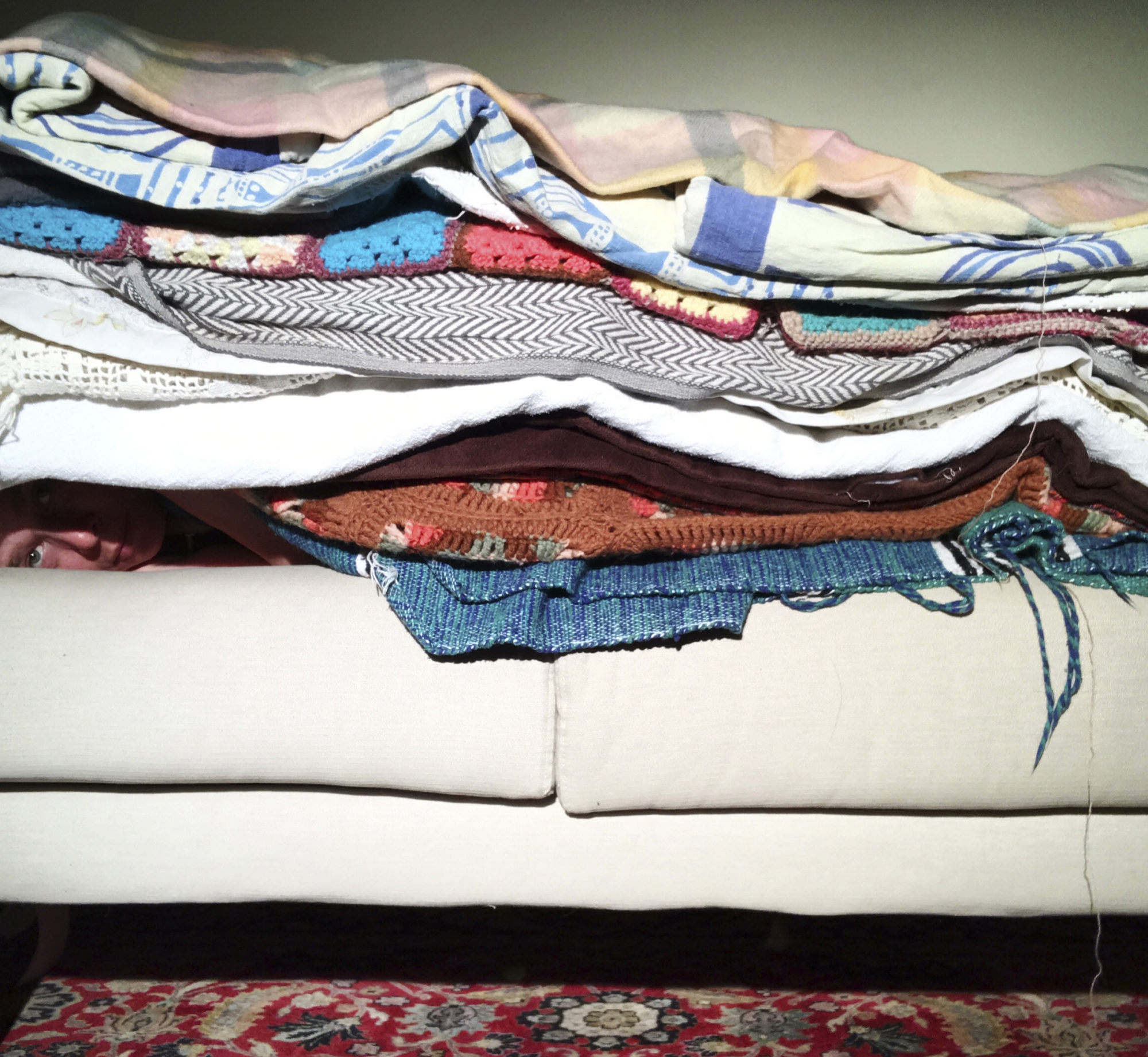Living & Working
Share:
When I last sat down to write an editor’s letter, it was for Spring 2020, Art of the New Civil Rights Era, in late March. We had only just closed our office to work from home and shelter in place. We printed a note for the door, which read “We are working from home this week.” The note remains taped to the door, almost five months later. We were jellyfish adrift in the current of an unknowable future.
As we worried over whether bookstore and library closures would stifle readership of our spring issue, its theme went from feeling timely to being urgent. As pandemic conditions were revealing the most brutal inequalities at the intersection of capitalism and public health, police in the US killed George Floyd, Breonna Taylor, and—in Art Papers’ own back yard—Rayshard Brooks. In the midst of a halted economy and halted futures, these most recent killings proved that the violence of structural racism does not halt.
This issue’s Living & Working theme was decided more than a year ago, in what feels like a distant and naïve past. In the past five months, conditions of living and working—in the arts and practically everywhere else—have been upended, suspended, or exacerbated. The rapidly unfolding impacts of COVID-19 left us reeling and questioning how to hold space for earnest reactions to conditions that seemed to change fundamentally with each passing week. Many of the texts and projects in this issue were conceived, if not drafted, before or in the early weeks of quarantine. To write about, let alone attempt to analyze the events of past months began to feel a bit like aiming for a moving target, while positioned inside the target.
Some contributors expressed concern that their interviews and essays, written in the peculiar, slow-motion experience of rapid change, suddenly felt acutely outdated. To situate the artists’ and writers’ thoughts and observations in a more precise context, the date of each contribution’s first complete draft appears at the end of each text in this issue. I can’t help but hope that the sentiments which felt prematurely out of date won’t always feel that way; and that, with a little more time, we’ll look back with a sense of coherence. Perhaps then, the seemingly divergent realities of 2020 will gain legibility, like the elegance of a hurricanes’ spiral, which can’t be seen from within the storm. I hope that the date markers on these texts will take on new meaning: no longer a way of explaining their disjuncture, but a way to mark their proximity.
In this issue, Miriam Simun’s text-and-image artist project, Bodies/Antibodies meanders through the first month or so of quarantine, exploring the porousness of the body—the touching/not touching—and offers a kind of choreography of permeability. In Living & Working in Other Worlds, Tal Beery calls for making new worlds from the deconstructed raw material of our most stolid and faltering institutions. Re’al Christian spoke with Chang Yuchen in the early weeks of quarantine. In Language, Use, Value they discuss Chang’s experience of traveling from China to the US in early 2020, the strangely fragmented temporality of solitude, and feeling useful. Nathan Lee reflects on epidemiological subplots and the ethics of knowledge in Thinking Through Contagion. Tori Tinsley’s paintings appear in an artist project that cautions with its title, There Will Be Sacrifices Along The Way. Joey Orr interviews this issue’s cover artist, Lilly McElroy, wherein they discuss how Absurdity Is a Protest, the challenges of being an educator in a pandemic, and McElroy’s couch as a quarantine performance stage. EC Flamming, Laurel McLaughlin, and Madeleine Seidel review various projects that, together, track a sampling of artists’ and galleries’ shifts to remote models; and Katie Geha reviews two books, on the passing of time, written by sisters, that were published in 2020.
At the literal and figurative center of this issue is The Museum Union Wave, an extensive research project by Maxwell Paparella, that tracks the wave of museum unionizations in the US, which began in 2018 and collided with COVID-19. Paparella presents a meticulous timeline and accompanying essay with a companion glossary and expanded content—alongside online exclusives that expand the bounds of this thematic engagement—on artpapers.org.
Sarah Higgins
Editor + Artistic Director
editor@artpapers.org
Lilly McElroy, Trying to Make Myself Comfortable #2 (under every blanket in my house), 2020 [courtesy of the artist and Rick Wester Fine Art, New York]


